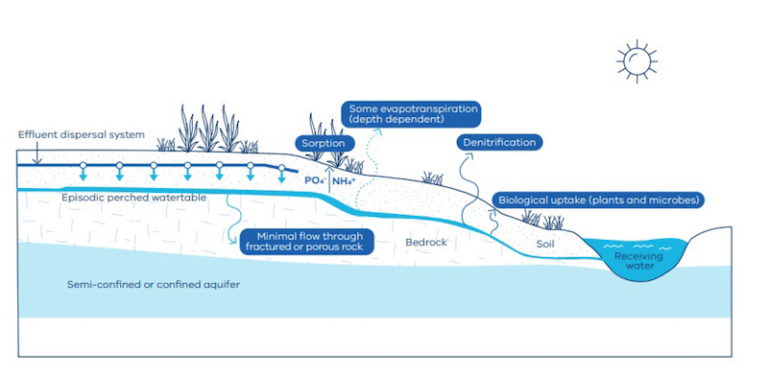Introduction:
In Australia, setback distances to open water for potable and non-potable water sources are critical measures to protect water quality and public health. For potable water sources, such as drinking water supplies, the setback distances are typically more stringent. These distances are designed to minimize the risk of contamination from wastewater systems, agricultural runoff, and other potential pollutants.

The Australian Guidelines for Water Recycling recommend setback distances based on the type of wastewater system, the volume of effluent, soil type, and the proximity to sensitive environments. For instance, septic systems must often be located at least 100 meters away from potable water sources to prevent pathogens and nutrients from entering the water supply. This distance can be adjusted based on specific local conditions and risk assessments conducted by regulatory authorities.
For non-potable water sources, such as those used for irrigation, industrial processes, or recreational purposes, the setback distances can be less stringent compared to those for potable water. However, they still play a crucial role in mitigating contamination risks. Setback distances for non-potable water are determined by the potential for human contact and the environmental impact of the wastewater. Typically, these distances are designed to protect aquatic ecosystems from nutrient overload, particularly nitrogen and phosphorus, which can cause eutrophication and harm aquatic life. In some regions, the recommended setback distance for non-potable water bodies might be around 50 meters, though this can vary based on factors such as effluent characteristics and local environmental conditions.
Both potable and non-potable water setback distances are essential components of water management strategies in Australia. They are enforced through various national and state regulations, ensuring that wastewater systems are appropriately sited to protect water quality. These regulations are complemented by regular monitoring and compliance checks to ensure that the setback distances are maintained and effective in protecting water resources. By adhering to these guidelines, Australia aims to balance the needs of urban development, agricultural activities, and environmental conservation, ensuring safe and sustainable use of its water resources for all purposes. For more information regarding Land Capability Assessments for Septic speak to Chris or Request an obligation free quotation.





